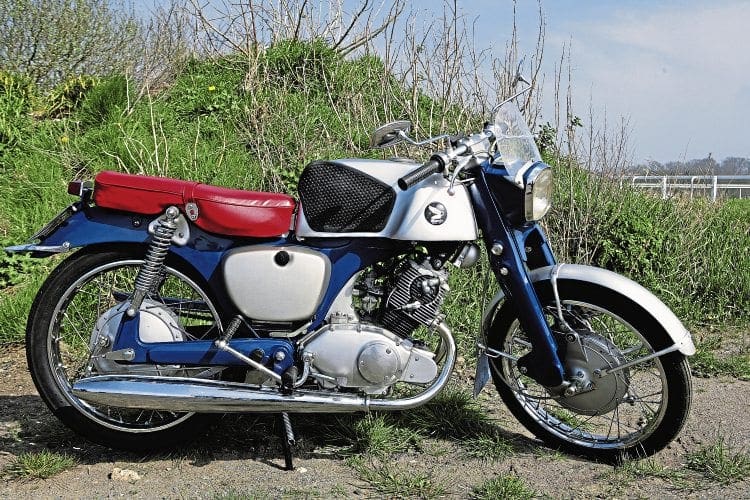Dave Manning looks back to the very first days when ‘Honda’ became a familiar word, and the enthusiasm with which the weekly motorcycle press welcomed Japan’s engineering excellence.
When Soichiro Honda claimed, in 1954, that the Honda Motor Company was “bigger than Japan”, many thought his words to be an idle boast that was simply for promotional purposes. But the following decade was to prove decisive, not just for Soichiro but for the motorcycling world in general. Honda’s decision to prove that a Japanese manufacturer could lead the world in production standards would begin at the highest level – at the Isle of Man TT.
Given that Honda-san had visited the TT during a trip to Europe in ’54, it is perhaps unsurprising that the company was soon producing models inspired by (some would say copied) the German NSU Rennmax, a 250cc parallel twin on which Werner Haas won his second world championship and which, yes, raced at the TT that year. Honda’s first twin-cylinder bike, the C70, was launched in 1957, followed by the C92 Benly the following year, with the CB92 Benly Super Sport (the B in the name referring to its sporting pretensions) joining the line-up shortly after.

Just four years after Soichiro’s first TT visit, Honda had developed their products to the point at which they could think about entering in the following year’s TT, 1959 and, to aid their focus, they obtained an FB Mondial of 125cc capacity – a European race bike built in ’56, that was the first true road race machine that the Honda technicians had seen – and the lessons learnt by studying the Mondial gave way to the first Honda that was specifically built for racing, the twin-cylinder RC141. Completed in January ’59, the RC141 was soon joined by the four-valve RC142, and both of those machines arrived on the Isle of Man on May 5.
It was, undoubtedly, a significant step for Honda to enter the ’59 TT, but it was also the start of a realisation among British motor journalists and motorcyclists that there just might be an alternative to British and European motorcycles, as the press was soon to show.
An overseas foray
But the ‘59 Isle of Man TT Race wasn’t Honda’s first overseas
foray, as in January 1954, two
riders left Japan for the first overseas race challenge taken up by a Japanese rider on a Japanese motorcycle, as they headed to Brazil for the São Paulo City fourth centennial celebration international motor race. Mikio Omura took a modified Honda Dream E-Type engine, with a crank modified to reduce the capacity from 150cc to 125cc, in a one-off tubular steel frame much like a dirt tracker, finishing thirteenth, although Katsuhiro Tashiro also competed
on a Meguro. This was also the year that Meguro launched their twin cylinder 500cc K1, which was heavily based on the BSA A7/A10, and just a year before they became affiliated with Kawasaki.
Read more in the May 2018 issue of OBM – on sale now!





